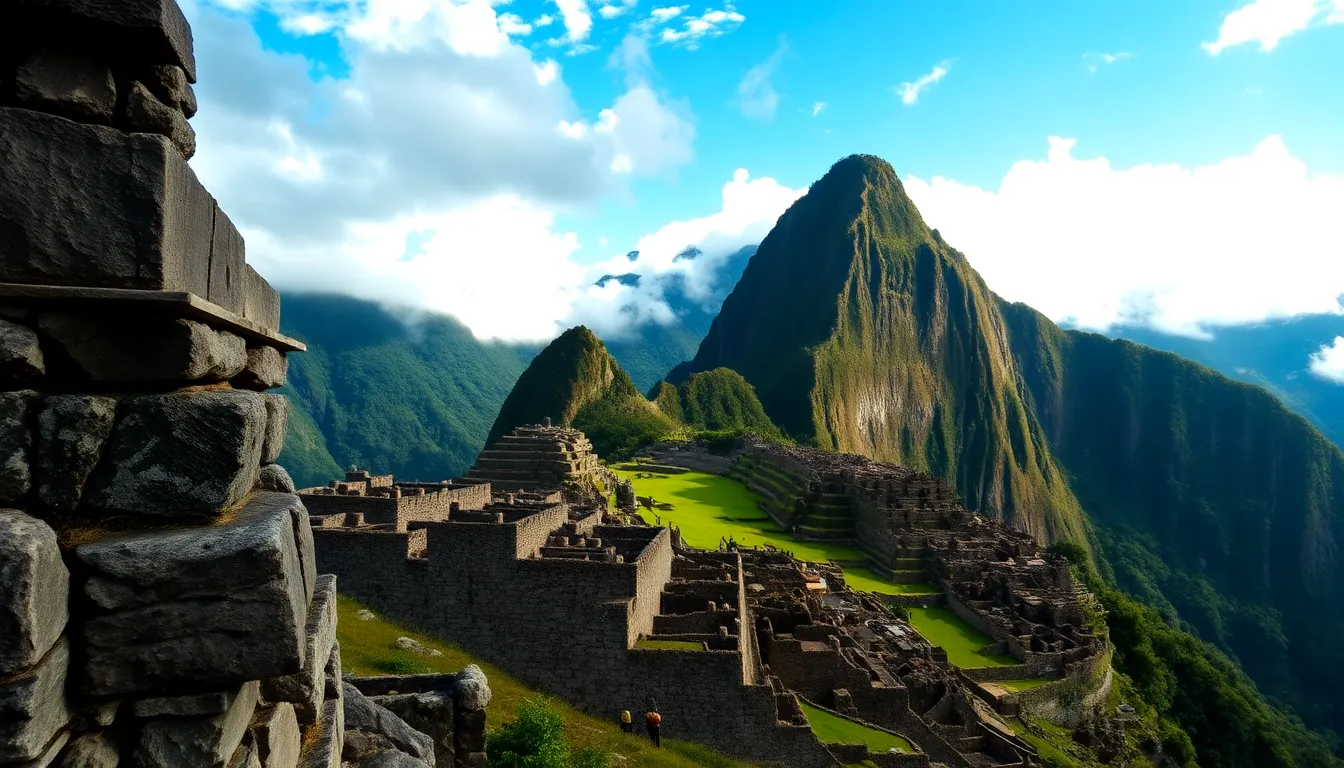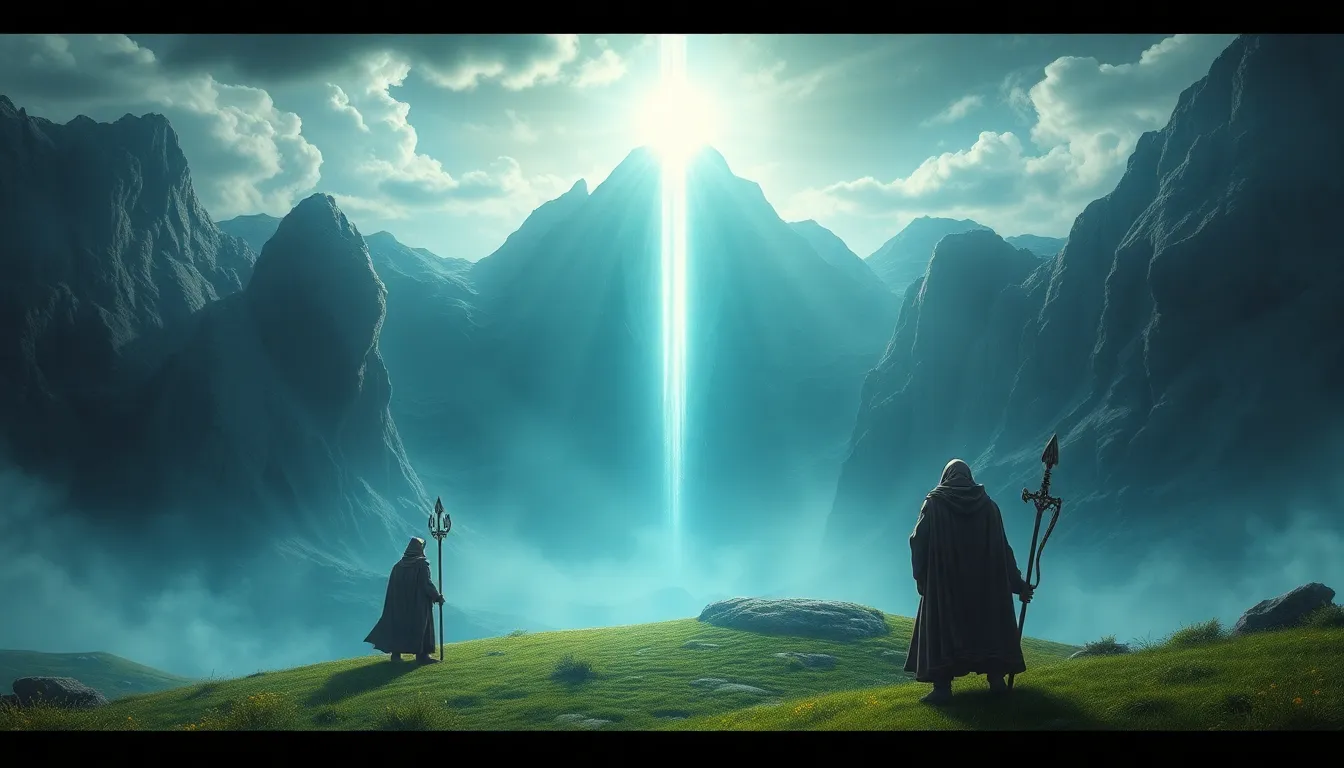The Kingdom of the Celestial Beings: Myths of Angels and Demons
I. Introduction to Celestial Beings
Celestial beings, often referred to as angels and demons, are supernatural entities that have captured human imagination for millennia. These beings are commonly perceived as mediators between the divine and the earthly realms, embodying the dichotomy of good and evil.
Across various cultures, angels and demons hold significant roles, influencing religious beliefs, moral values, and cultural narratives. Their existence prompts questions about the nature of good and evil, free will, and the human condition.
This article aims to explore the historical origins, characteristics, and contemporary relevance of angels and demons, providing a comprehensive understanding of their place in mythology and society.
II. Historical Origins of Angel and Demon Myths
A. Ancient Near Eastern traditions
The roots of angel and demon myths can be traced back to ancient Near Eastern cultures, where deities and spirits were believed to interact with humans. These traditions laid the groundwork for later theological developments.
B. Influence of Zoroastrianism on angelology and demonology
Zoroastrianism introduced a dualistic worldview that significantly influenced the development of angelology and demonology. The concepts of Ahura Mazda and Angra Mainyu established a clear division between good and evil, shaping later Abrahamic traditions.
C. Development through Judeo-Christian texts
In Judeo-Christian texts, angels are often depicted as messengers of God, while demons are portrayed as fallen angels or malevolent spirits. The Hebrew Bible and the New Testament provide rich narratives that further define these celestial beings.
III. The Nature of Angels
A. Characteristics and hierarchies of angels
Angels are often characterized by their ethereal nature, radiant appearance, and roles as protectors and guides. They are typically organized into hierarchies, with various orders such as archangels, seraphim, and cherubim, each serving distinct purposes.
B. Major angelic figures across different religions
- Gabriel: Known as the messenger angel, Gabriel is significant in both Christianity and Islam.
- Michael: Often regarded as a protector and warrior, Michael is a prominent figure in Christian angelology.
- Raphael: Associated with healing, Raphael appears in various religious texts, including the Book of Tobit.
C. Angels in popular culture and literature
Angels have permeated popular culture, appearing in literature, films, and art. From the biblical tales to modern interpretations, angels symbolize hope, guidance, and divine intervention.
IV. The Nature of Demons
A. Definition and characteristics of demons
Demons are often defined as malevolent beings that oppose divine will and seek to lead humans astray. They are characterized by deception, temptation, and chaos.
B. Major demonic figures and their roles
- Lucifer: Once an archangel, Lucifer’s rebellion led to his fall, symbolizing pride and defiance.
- Asmodeus: Known as a demon of lust and revenge, Asmodeus appears in various texts and folklore.
C. The portrayal of demons in folklore and modern media
Folklore often depicts demons as tricksters or vengeful spirits. In modern media, they are frequently portrayed in horror films and literature, reflecting society’s fears and moral dilemmas.
V. The Duality of Good and Evil
A. The moral implications of angels and demons
The existence of angels and demons raises profound moral questions about the nature of good and evil. They symbolize the constant struggle within humanity to choose between virtuous and malevolent paths.
B. The concept of free will and its influence on celestial beings
Free will plays a crucial role in the narratives surrounding angels and demons. The choices of celestial beings often reflect broader themes of temptation, redemption, and moral responsibility.
C. The balance of power between good and evil in mythological narratives
Many mythologies explore the balance of power between good and evil, depicting epic battles between angels and demons. These narratives serve as allegories for human struggles and the quest for moral integrity.
VI. The Role of Angels and Demons in Religion
A. Perspectives from Christianity, Islam, and Judaism
In Christianity, angels are seen as servants of God, while demons are viewed as adversaries. Islam acknowledges both angels and jinn (which can be good or evil), influencing Islamic theology and spirituality. Judaism incorporates a rich narrative of angels and demons, reflected in mystical texts like the Kabbalah.
B. Eastern philosophies and their interpretations of celestial beings
Eastern philosophies often present a more integrated view of celestial beings, where angels and demons are part of a broader cosmic order. Concepts like karma and dharma influence the understanding of these beings in Hindu and Buddhist traditions.
C. Syncretism: How different beliefs intertwine
Throughout history, different cultures have blended their beliefs about angels and demons, creating syncretic interpretations that reflect diverse spiritual insights and practices.
VII. Celestial Beings in Art and Literature
A. Representation of angels and demons in classical art
Art has long depicted angels and demons, with classical works showcasing their divine and infernal characteristics. Artists like Michelangelo and Raphael captured the beauty and terror of these beings in their masterpieces.
B. Literary depictions from Dante to Milton and beyond
Literature has explored the complexities of celestial beings, with figures like Dante’s Beatrice and Milton’s Satan offering profound insights into the nature of good and evil.
C. Contemporary interpretations in novels and films
Modern novels and films often reinterpret angels and demons, reflecting contemporary societal issues and moral questions. Works like “The Mortal Instruments” series and films like “Constantine” illustrate these themes.
VIII. Modern Beliefs and Practices
A. New Age beliefs surrounding angels and demons
New Age spirituality has revived interest in angels and demons, promoting beliefs in their roles as guides and protectors. Practices involving angel cards and meditation are prevalent among enthusiasts.
B. Rituals and practices invoking celestial beings
Many cultures engage in rituals to invoke celestial beings for protection, guidance, or healing. These practices can range from prayer and meditation to more elaborate ceremonies.
C. The role of angels and demons in spiritual healing and protection
Belief in angels and demons often intersects with spiritual healing practices, where individuals seek the assistance of these beings for emotional and physical well-being.
IX. The Psychological and Cultural Impact of Celestial Beings
A. The influence of angel and demon myths on human psychology
Beliefs in angels and demons can have profound psychological effects, shaping individuals’ worldviews, coping mechanisms, and moral frameworks.
B. Societal implications of belief in celestial beings
The belief in celestial beings influences societal norms, ethics, and laws, often reflecting cultural values regarding morality and justice.
C. The impact of these myths on moral and ethical frameworks
Angel and demon myths contribute to the formation of ethical frameworks, providing narratives that guide individuals in their moral choices and behaviors.
X. Conclusion: The Enduring Legacy of Celestial Myths
A. Summary of key points discussed
Throughout history, angels and demons have served as powerful symbols of good and evil, shaping religious beliefs, cultural narratives, and individual psychology. Their stories reflect humanity’s struggles with morality, free will, and the quest for meaning.
B. Reflection on the relevance of angels and demons in contemporary society
In contemporary society, the myths of angels and demons continue to resonate, influencing artistic expressions, spiritual practices, and moral discussions. As humanity navigates complex moral landscapes, the legacy of these celestial beings remains a vital part of our cultural and spiritual heritage.



